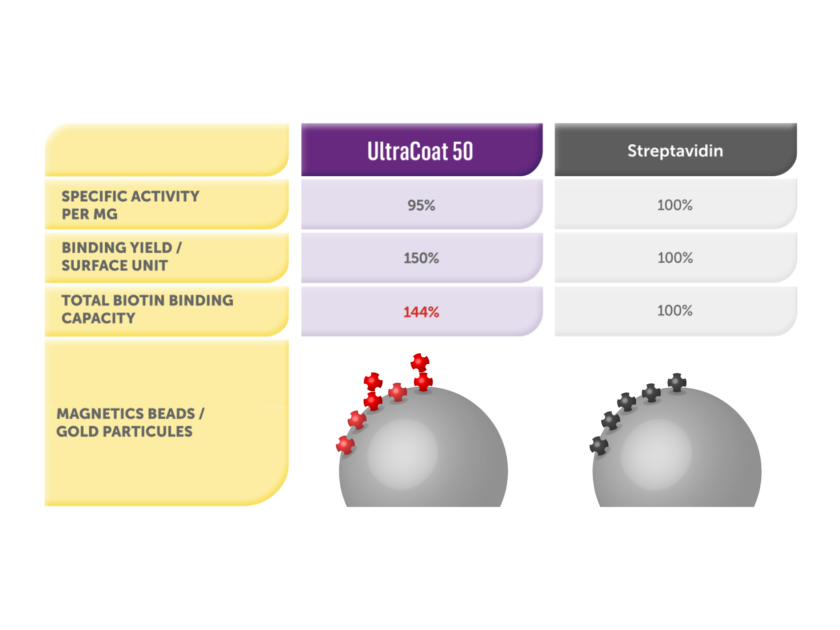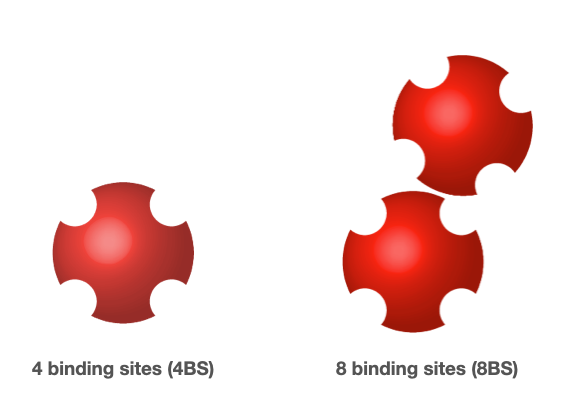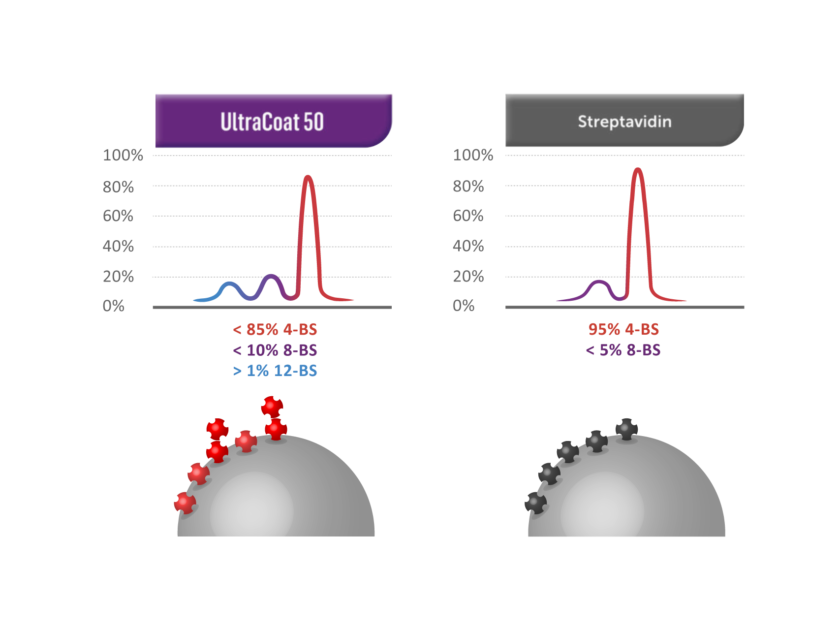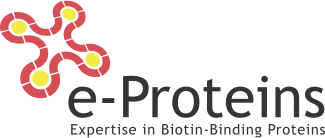Ultracoat50
Why Ultracoat50 Enables a Higher Binding Performance for Purification
The e-proteins derivative for purification is superior to Streptavidin not only in terms of higher binding performance for purification but it offers price competitiveness.
Ultracoat50 provides at least 25% more binding signals than steptavidin when coated on beads or biochips plastic membranes. Consequently, it enables a greater target capture efficiency when UC50 is coated on magnetic particles or magnetic nanoparticles.
This derivatives process is based on the reliable Ultracoat70 process with different working points that generate optimized polymerization and less waste that directly impacts the final price.

Ultracoat50 presents a multy layers binding form . This enables a 25% increased capacity compared to streptavidin
Ultracoat50 Properties
- It binds biotinylated ligands such as proteins, nucleic acids, and peptides.
- Fast reaction kinetics.
- Covalently bonded Lite Avidin Coating.
- Lower non-specific binding.
- Highest throughput and precision.
- High solubility.
- No aggregation due to linkers.
- Constant extinction coefficient.
- Homogenous with dimers, enabling a double binding layer with a limited spheric encumbrance (low molecular weight < 250 kDa).

Ultracoat50 presents a second binding layers that increases the purification yield

Ultracoat50 competes streptavidin beads coating with a added capacity > 25 %
Variations in Ultracoat50
- High-speed version
- Biotin binding ranges: from 2500 to 7500 pmol/mg
- 2 versions for 2 different pH range usage according to the customer protocol (cover full pH range).
FAQs
What are magnetic beads for purification ?
The magnetic beads, made up of tiny particles (20 to 30 nm) of iron oxide, such as magnetite (Fe3O4), have remarkable superparamagnetic properties. Indeed, these superparamagnetic beads only behave magnetically in the presence of an external magnetic field, unlike ferromagnets. This characteristic, dependent on the small size of the particles in the beads, allows for their separation in suspension from any substance to which they are bound. Thus, they can be used without fear of agglomeration, as they do not attract each other outside of a magnetic field.
What are the types of magnetic beads ?
What kind of purification with the magnetic beads ?
Ultracoat50 coating on the magnetic beads enables the higher binding performance for purification of :
- The Biotinylated antibodies and other proteins
- Biotinylated dsDNA (gDNA, PCR products) or biotinylated RNA
- Biotinylated oligonucleotides
Contact Us if you want to learn more about our product or have any queries. e-Proteins guarantees the best prices for the highest quality.
UltraCoat50 specifications
| Physicochemistry | Ultracoat | Ultracoat (neutral) |
|---|---|---|
| Purity | 100% | 100% |
| Activity (U/mg solid) | > 14 | > 13 |
| Moisture content (% w :w) | < 5.0 % | < 5.0 % |
| Extintion coefficient | 1.80-2.00 | 1.80-2.00 |
| Isoelectric point | 9,5 ± 0,2 | 6,2 ± 0,2 |
| Deglycosylation level | ± 90% | ± 90% |
| Dimer > 10% | OK | OK |
| Optimum Solubility (transmittance @650nm 15mg/ml in water pH) | pH < 7 and pH > 10 | pH < 5 and pH > 8 |
Details:
| Microbiology | UCA & UCnA |
|---|---|
| Total Bacterial Count in 1 mg | < 1 |
| Other | UCA & UCnA |
|---|---|
| Definition of activity | One Unit activity binds 1 µg of biotin |
| Country of Manufacturing | Belgium |
| Origin | Egg proteins from hens |
| Apparence | White to off white free flowing lyophilised powder, free of any visible impurities |
